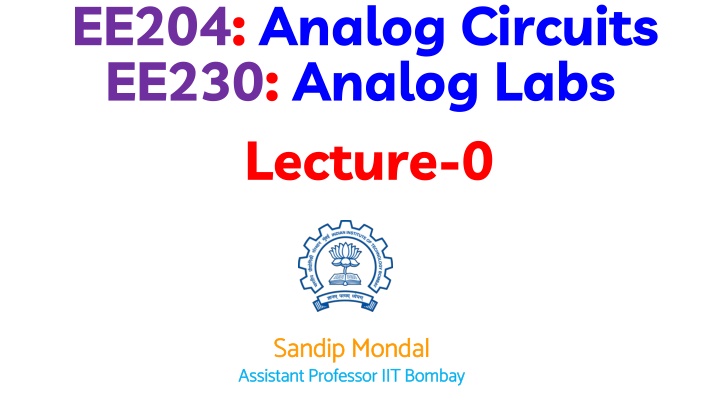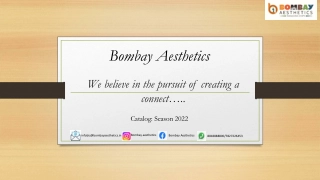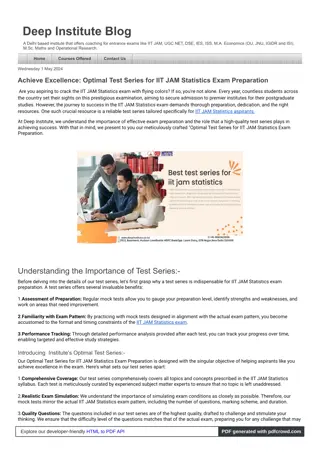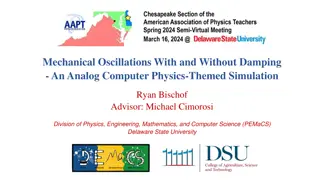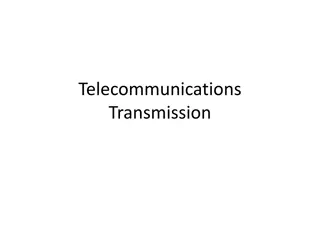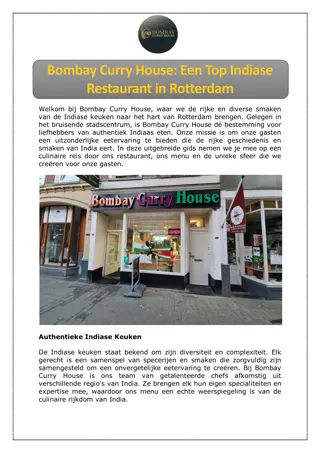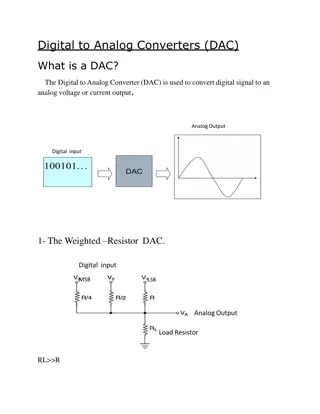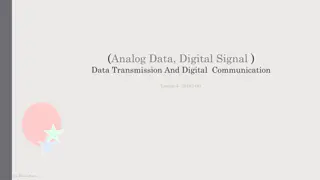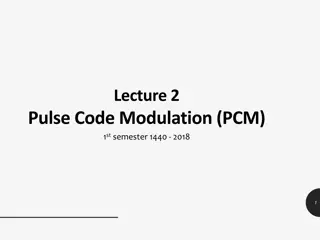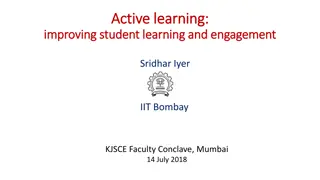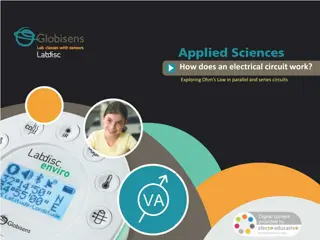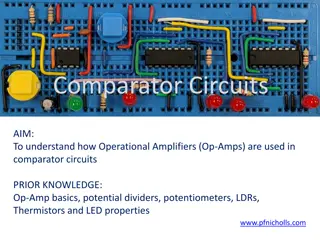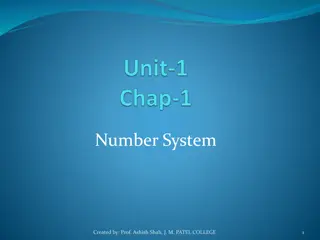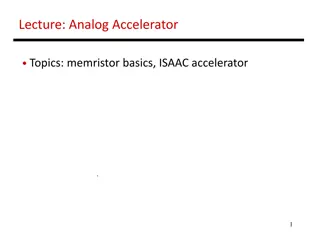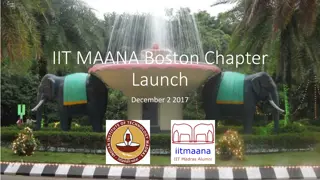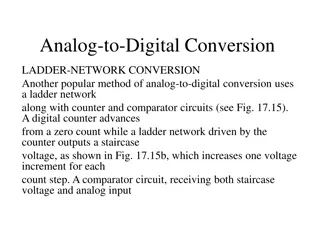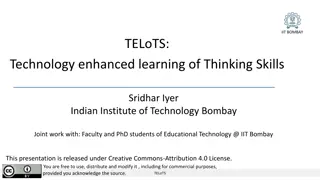Analog Circuits and Labs Lecture Schedule at IIT Bombay
Lecture schedule and course materials for EE204 Analog Circuits and EE230 Analog Labs delivered by Assistant Professor Sandip Mondal at IIT Bombay. The grading system, class note submission guidelines, attendance rules, and classroom discipline expectations are outlined for the course. Students are encouraged to participate actively, maintain academic honesty, and adhere to the specified guidelines.
Download Presentation

Please find below an Image/Link to download the presentation.
The content on the website is provided AS IS for your information and personal use only. It may not be sold, licensed, or shared on other websites without obtaining consent from the author.If you encounter any issues during the download, it is possible that the publisher has removed the file from their server.
You are allowed to download the files provided on this website for personal or commercial use, subject to the condition that they are used lawfully. All files are the property of their respective owners.
The content on the website is provided AS IS for your information and personal use only. It may not be sold, licensed, or shared on other websites without obtaining consent from the author.
E N D
Presentation Transcript
EE204: Analog Circuits EE230: Analog Labs Lecture-0 Sandip Mondal Assistant Professor IIT Bombay Sandip Mondal Assistant Professor IIT Bombay
Shoubhik De (PhD) West Bengal Jitendra Kumar (Ph.D.) BIHAR Alok Kumar (Ph.D.) BIHAR Riya Sharma (PhD) UP Atul Sachan(PhD) UP Kharalkar Ajinkya Dilip (PhD) MAHARASTRA Tanveer Molla (MTech) West Bengal 2
Lecture Schedule and Course Materials Lectures: Wednesday 11:05 - 12:30 Friday 11:05 - 12:30 To be decided Tutorial: https://www.ee.iitb.ac.in/sandip/teaching.html 3
Grading *Four Quizzes: 10 % (Surprises) *Every class Quizzes: 20 % (SAFE) *Mid-sem: 20 % *End-sem: 40 % *Class Notes: 10 % (Min 3 pages/class) Optional Project work: 10-100 % (Project dependent) * TC Applies 4
Class Note Submission Link Submit Minimum 3 Pages Note within 24 hours ( (Minimum word limit 2500. No maximum limit. The document should be the Submit Minimum 3 Pages Note within 24 hours Minimum word limit 2500. No maximum limit. The document should be the editable format editable format (docs, note pad (docs, note pad etc etc) ) Moodle https://moodle.iitb.ac.in/login/index.php Turnitin software (https://www.turnitin.com/) will be used to check the plagiarism from books, online documents or other student s notes.
Term and Condition (TC) Attendance > 90 % 80% 89% 70% 79% 60% 69% 50% 59% <50% Grading System Grading will be based on 100% of your obtain percentage Grading will be based on 80% of your obtain percentage Grading will be based on 70% of your obtain percentage Grading will be based on 60% of your obtain percentage Grading will be based on 50% of your obtain percentage Fail (Except project) 6
Disciplines in classroom Classroom Behavior Be attentive in the lectures. Do not join for the sake of attendance. Ask questions. Academic Honesty It is expected that students in EE204 will maintain the highest standards of academic honesty. In particular, it is expected that in the course of taking a test or examination, students will not (1) accept information of any kind from others and give information to others (2) No googling the answers. 7
Term and Condition (TC) No Electronics are allowed in class ONLY PEN-PAPER (except during Quizzes) 8
References Foundations of Electrical Engineering by L. S. Bobrow Electrical Engineering Fundamentals by Vincent Del Toro Alternate reading for much of the material covered in this course can be found in numerous texts. Some recent ones are: Foundations of Analog and Digital Electronic Circuits by A. Agarwal and J.Lang Principles and Applications of Electrical Engineering by G. Rizzoni Solid State Electronic Devices, by B. G. Streetman Semiconductor device Fundamentals by R. Pierret Digital Microelectronics, by H. Haznedar 9
References 10
References 11
Syllabus Biasing of discrete devices and integrated circuits, Low frequency amplifiers, Feedback response of amplifiers and high frequency effects, Internal stages of OPAMP Difference amplifier, Intermediate stage amplifier, Level shifter, Output buffer, Linear applications of OPAMP, Non-Linear applications generation with OPAMP, Regulators, Power amplifiers. amplifiers, Frequency of OPAMPS, filters, Wave Active Oscillators, 12
EE204: Project Proposal-1 (10%) Designing cost-effective spin-coating system Spin coating is a unique technique used in semiconductor manufacturing industries to fabricate thin uniform films on a flat substrate. A Spin Coater is an electrical system used for spin coating and is one of the most universal equipment in any laboratory dealing with devices. (1) Most marketable spin coating systems are extremely expensive (> US $2000) and come with features and specifications not essentially desirable for fabricating and experimenting with semiconductor devices. (2) The cost of this instrument should not act as a warning for groups intending to venture into fabricating and experimenting with simple devices, hence the effort in this direction. (3) This system must be designed with your own expenditure and should be below Rs. 10000/- Max vacancy: 5 groups (2 person/group)
EE204: Project Proposal-2 (30%) Digitalization of Hospital at IIT Bombay As you know a small Hospital is located at IIT Bombay campus. There are many doctors who offer medical services for 24 hrs. However, they write a prescription on paper which is also called a Medical book for the patent. There is the possibility that you may lose your medical book due to some reason. Hence you will be losing your medical history. The main goal of this project is to (1) designing a software/app for doctors in order to store patent information in digital form. (2) Paper-made medical book is not required. Doctor can access your medical history through your student ID number. (3) The software/app will be accessible by the patent and doctor from outside the hospital (4) If the student is not well, the app will automatically send an email to the course instructor. No pink slip is required. (5) The app will be available in the pharmacy. You may go directly to the pharmacy to collect your medicine. Max vacancy: 3 groups (2 person/group)
EE204: Project Proposal-3 (100%) Artificial Intelligence using NAND memory Blur image processing would be done using NAND memory technology. The main goal of this project is to (1) Used FTDI controller and connect with computer (2) Design the software/firmware using Python programming. (3) Cleaning of blur images should be performed using the system (4) File the patent Max vacancy: 2 groups (2 person/group)
Project Registration Link You can registrar for ONLY ONE project You can registrar for ONLY ONE project https://rb.gy/zz44w No credit if you are unable to complete the project No credit if you are unable to complete the project
What you need to buy? Bread board Digital Multimeter Single Standard Wires (Multi-color) Resistance box Capacitor box 17
